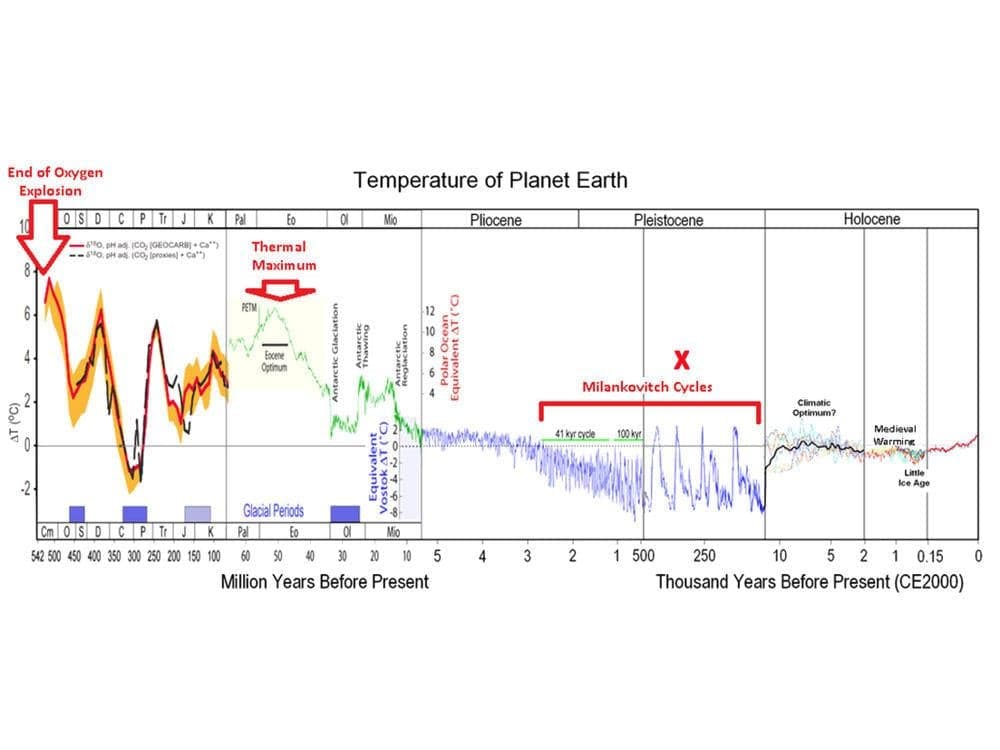The universe is estimated to be approximately 13.7 billion years old. Our solar system is estimated to be approximately 4.6 to 5 billion years old, while the earth is estimated to be approximately 4.3 to 4.6 billion years old. Earth’s history is one of periodic glacial periods, shifting continents, volcanic creation and destruction, occasional meteor impacts and a variety of other major and minor events.
Our understanding of earth’s atmosphere and climate is very limited prior to approximately 500 million years ago. The graph below illustrates our current understanding of the earth’s climate history over that period.

The most recent period in earth’s history is arguably the period of greatest temperature stability in the historical record. However, it is obvious the climate continued to change over this period. There is no obvious period of temperature stasis anywhere in the record; and, it seems strange to suggest that the current period should become a period of temperature stasis. There is also no reason to believe that Milankovitch cycles have ceased. Rather, the graph above suggests that the earth might be approaching the peak of a Milankovitch cycle, which would then be followed by several thousand years of cooling temperatures.
The graph below illustrates both the temperature and atmospheric CO2 concentration over the entire estimated period of earth’s existence. Temperatures and CO2 concentrations in the atmosphere have been substantially higher in the past than is the case today. The glacial periods shown in the graph above all occurred when atmospheric CO2 concentrations were as high as or higher than current atmospheric CO2 concentration, as shown in the graph below.

Dr. Vincent Gray’s conclusion from this graph: “It will be seen that there is no correlation whatsoever between carbon dioxide concentration and the temperature at the earth’s surface.”
Modern humans as we know them are thought to have evolved approximately 315,000 years ago, though there is evidence of other hominin species as long as 6-8 million years ago. The red X in the graphs above indicate the approximate appearance of modern humans. Modern humans are believed to be the only one of the hominin species which has survived. However, if we accept Darwin’s Theory of Evolution, the predecessor organisms of modern humans and all other currently existing creatures have existed on earth throughout its existence, adapting and surviving or not adapting and becoming extinct.
The graphs above make it clear that our human ancestors have adapted, survived and ultimately thrived through a series of temperature changes. The historical record illustrates that humans have fared better in warm than in cool periods. The temperature changes during the Roman Warm Period, the Medieval Warm Period, the Little Ice Age and the current warm period pale in comparison to the temperature changes labeled as the Milankovitch Cycles in the first graph above, no less the temperature changes which occurred more than 8 million years ago.


